Fly Line Weight Chart
Skip To Save Time
A Beginner’s Guide to the Fly Line Weight Chart
When you’re beginning to enjoy fishing, all the numbers and codes might seem confusing. After all, what do these numbers mean, and how do they affect your fishing?
An experienced angler will tell you that not all fly lines are equal.
Not only do they come with different tapers, floating and non-floating, and even lengths, but they also come in different weights or sizes.
In this article, we explore the fly line weights and the chart that can help you make the best of your fishing expeditions.
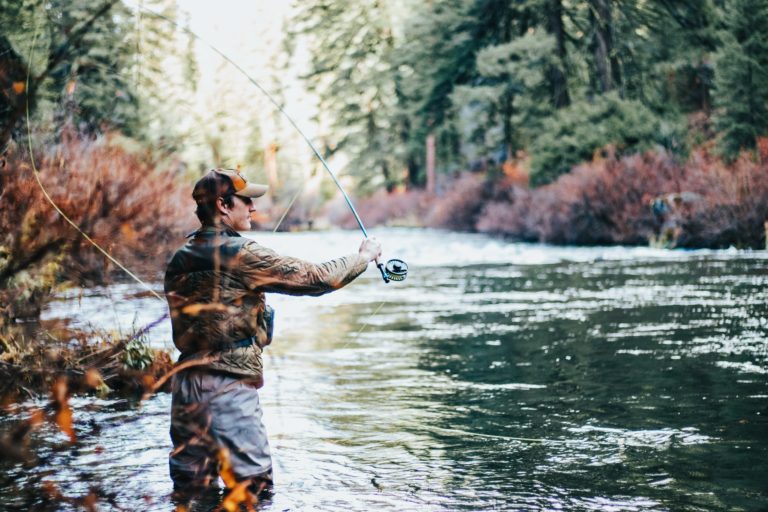
What are the Fly Line weights?
All manufacturers weigh their fly lines. These are measured in a measurement that is known as grains.
There are 14 grains in every gram. There is then a scale that is easy to understand and remember. The scale runs from 1 to 14 and relates to the grain. The smaller the number, the lighter the fly line is. Therefore, the higher the number, the more weight there is for the fly line.
The size of the fly line determines what you can fish for. Smaller fly lines are only going to catch smaller fish, and heavier lines will be more suited for those more powerful and heavier.
The trouble is that while you might think using the wrong gain might not be so problematic, that isn’t the case.
If you try to catch a fish that is too strong for your line, it will likely break the line, which is a cost that you can prevent, as it will ruin your day fishing.
When buying a new fly line, you must look at the box and see if they’ve labeled it for a specific size; all manufacturers do. Then you can see whether or not it is suitable for the game fish you want.
You might want to buy several lines, each at a different grain that allows you to fish for whatever size is available at some time.
Fly Line weights Chart and Explanation
Here are short descriptions of each fly line’s weight and what they are ideally suited for. So if you’re out buying a new line, you can check against this fly line size chart to see if the one you’re looking at is suitable for you.
Fly Line Weight 1-3
These are the lowest weights that you can get. Ideally, these are for smaller fish that you can fly fish for. Usually, you try to catch panfish of this size. However, that doesn’t mean that you can’t catch smaller trout. Some people have claimed to catch larger trout, but usually, this is in slower-moving streams where the trout is at a considerable disadvantage or already exhausted.
Fly Line Weight 4
Weight four is the best for those who are new to game fishing. It works perfectly fine for panfish but is also suitable for some of the largest trout. It is best used when fishing in small/medium-sized streams or when you don’t need longer casts.
Fly Line Weight 5
This is known as the ‘all-rounder’ trout fisherman’s line weight. It is versatile and covers all trout-fishing situations you’re likely to find. It works brilliantly for smaller fish as well.
However, you need to ensure that you enjoy catching these fish and many anglers prefer to go for larger game fish. This weight might also work if you’re looking to catch large bass.
Fly Line Weight 6
This is another weight considered a good ‘all-rounder’ for trout fishing. It can cope with many challenging conditions and catch some of the largest trout you might want to game fish for.
However, for those smaller fish, this weight is a little overkill.
You can also catch most bass with this line, though some larger specimens might still be elusive.
Fly Line Weight 7
While this might seem far from the top weight if you’re seriously getting into some of the bigger fish with this weight class.
These lines are best used for some more powerful bass, small salmon, and steelhead. These lines are fantastic, but there are states where this line just doesn’t make sense to use, like in Montana.
Fly Line Weight 8+
The fly line weights of eight or more are designed for some of the most influential game fish you can aim to catch. These weights are impractical in most freshwater environments.
If you’re fishing for some of the larger salmon species in Alaska, you will need a line with a weight of 8 or more. However, if you’re fishing in saltwater and want to catch some large fish, you might want to consider one of these weights.
Comparing the Fly Size to the Fly Line Weight
When it comes to fishing, there are lots of numbers to remember. Another number that you might come across is the size of the fly. A fly is a lure you attach to the line to attract and reel the fish. The size of the fly can also refer to the hook size.
When it comes to catching trout, there are 22 sizes of trout fly. These generally fit into the numbers 0 to 22. The most common hook size for trout fishing is 10 to 16. Those which are less than this are designed chiefly for smaller trout. Those higher than 16 are for the largest trout but can often mean that smaller trout cannot be caught.
You need to know what size of fly you will use for your fly line to make the most of your fishing trip. What happens if you have a too heavy fly line with your flies then, your fly will slam into your water. This will scare away the game fish.
In addition, the fly won’t be presented appropriately. This is when it looks wrong and won’t attract the fish. The typical presentation error is that it will land upside down or on the side.
Another problem is that you can sometimes have inaccuracy with your fishing line. This is something that you want to avoid constantly. Good accuracy allows you to cast your line exactly where you want it to go, near your game fish.
And you must also think that you must ensure that you’ve got the right rod and reel. If any of these mismatches, the experience of fishing can be disastrous.
The Best Fly Fishing Lines by Weight
Here are some of the best fishing lines based on each weight. Therefore, you can see which lines you need for your planned fishing trip.
Size 1 - Piscifun Sword Fly Fishing Line
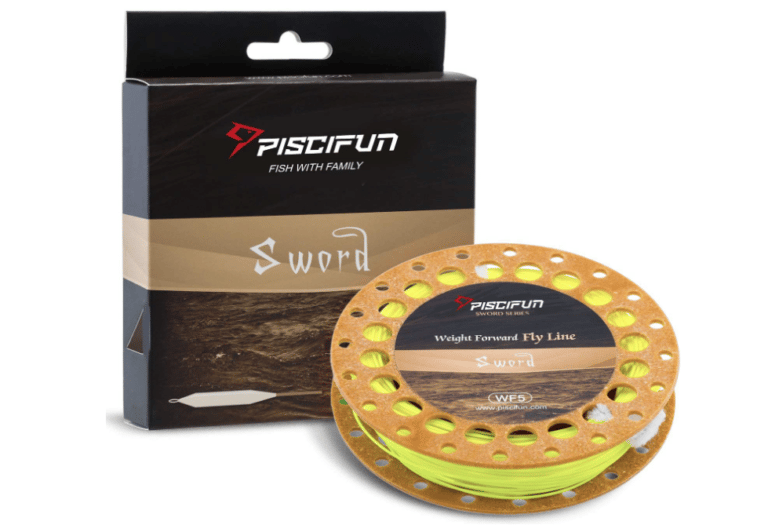
This is the most versatile and well-designed fly line for smaller trout fishing. It is perfect for both those new to the sport and those who are experienced. It has a braided core for lower memory, making it the perfect option for any weather condition. And because of the long head and bigger diameter, you can easily cast this, even with little or no experience.
The color makes it the perfect line to cast on clear waters during the day, allowing you to see the line better.
The line is also great for those who want to have a long, 90ft line. The performance of this line will be maintained for a long time due to its durability.
Highlights:
- A size one option for those looking to catch smaller game fish.
- Durable, able to be used countless times.
- High visibility, perfect for those who are looking to fish during the day.
- Easy casting, perfect for experienced and beginner anglers.
Size 2 - AnglerDream WF Fly Fishing Line Kit
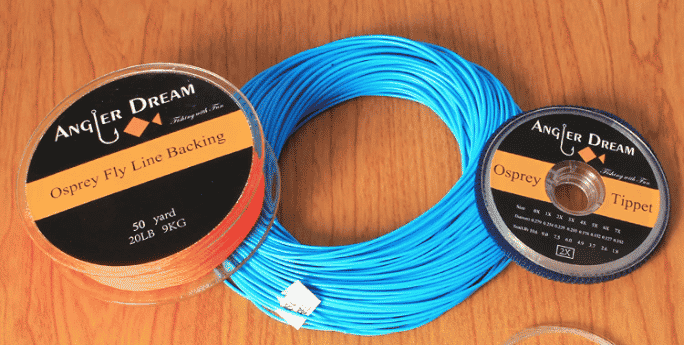
This fishing line comes in numerous colors, allowing anglers to use the size they most like and one that will perform well for the conditions. While the color of the line during the day can be anything, as long as you can see it, the line at night should be a darker shade, just not black, as it will be hidden from the fish.
A braided backing line with a low coefficient of friction minimizes the guides’ wear and tear. Therefore, this line can be used countless times.
The fly fishing line is weighted forward. Therefore, it is perfect for lots of circumstances. The line is also fifty feet long.
Highlights:
- Comes in numerous colors for your personal choice.
- Minimised damage from use, allows for numerous uses.
- Fifty-foot length.
- Perfect for beginners and experts alike.
Size 3 - M MAXIMUM CATCH Maxcatch Fly Line Weight Forward
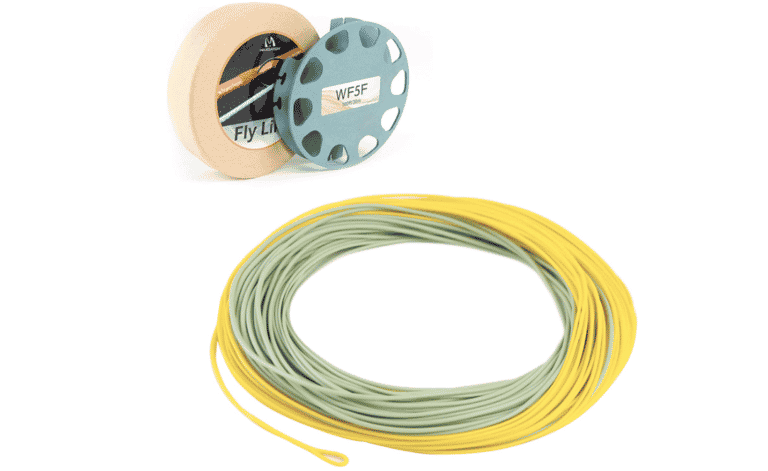
This floating fly fishing line has seven color options to ensure that you choose a color you can see when out fly fishing or one that will blend into the water to hide from trout at night. This line is known as a good all-rounder option for trout fishing. The line can be cast far and with accuracy.
Flies of all sizes can also present perfectly. The front taper allows the perfect presentation of flies as gently as possible. The PVC coating has a special softener that adds a super slick performance. Whether the water you’re fishing in is warm or cold, the fly line will slide easily and float well.
The dual-tone color allows for better loading times with the rod, and you can control the casting distance much better.
Highlights:
- Perfect for beginners and experts alike.
- Control the casting with more accuracy.
- Better performance.
- Great for trout fishing.
Size 4 - Aventik Fly Line Fishing Floating Line
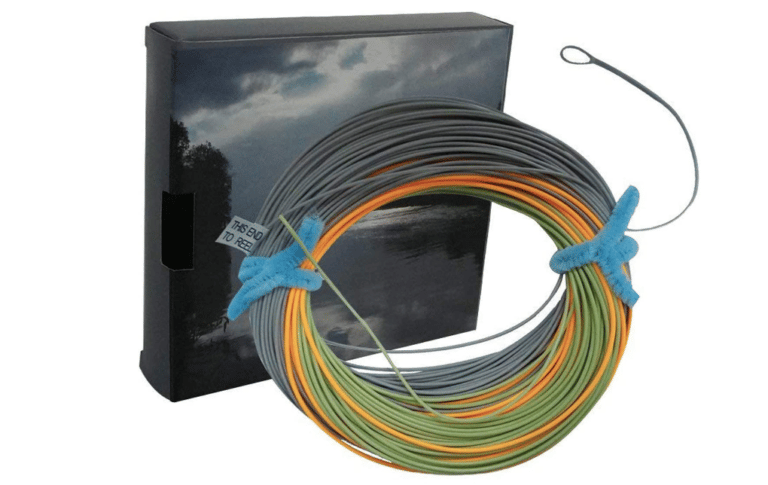
When it comes to the best size for beginners, the size four is often considered the starting point. This is a size for line (as well as higher sizes) with a 90-foot casting reach. The line has three tones. The first 20 feet is one color, the main body of the line is a second color, with the final aspect a third color. This allows you to perform better when you’re fly fishing.
The line has an ultra-low stretch core built through a pre-treatment and pre-fix of the braided line. The line, therefore, is more sensitive and will connect with more game fish than you can consider. The line will work in all weather conditions as well.
The dynamic tapering structure varies on different line weights. Therefore, you can have a more accurate fly line casting action.
Highlights:
- Brilliant for all those who enjoy fly fishing.
- Comes at a length of 90 feet.
- More sensitive line, allowing for a better catch.
- A three-color design for better performance.
Size 5 - SF Fly Fishing Floating Line with Welded Loop

This 90-foot line is designed as a weight forward. It is a fluorescent yellow color, so it can be seen on any water regardless of weather conditions. The designers of this fishing floating line have a welding label. It comes with two welding rings at both ends. Therefore, it is easier for you to replace the leaders. A hint label can also prevent you from confusing the weld ring for the other end.
The line effortlessly floats. The unique taper design with different core cap formations allows it to be precise when cast. Even in windy conditions, accuracy is a given on this line.
The line is made from the best materials to ensure that you can use this line all the time.
Highlights:
- Made from the best materials for continued use.
- Labels to make it easier to use.
- High visibility line, so can be seen in any weather condition.
- Special taper design.
Size 6 - Airflo Sixth Sense Sinking Fly Line

This is one of the more expensive lines available on the list. However, the quality of the line is worth the price tag. It offers super smooth casts and has an extended hang zone. The line is also a sinking line, but the sinking is steady and predictable. Therefore, you can be sure that your fish won’t be scared off.
This line has a low stretch power core, allowing it to keep its shape. Therefore, you can ensure that your line can be used repeatedly.
The line also comes in different colors, with color changes at 10 feet.
Highlights:
- A sinking fly line that is perfect for the more advanced angler.
- Comes in different colors.
- Sinks at a steady rate.
- High-quality fly fishing line.
Size 7 - Maxcatch Spey Fly Line Weight Forward WF7/8/9/10/11F

This is an excellent line with the most power behind it. It is not a line to catch smaller fish with. A long powerful front taper will unroll easily, and the loading point marker helps you quickly identify the sweet spot on the line.
The welded loops don’t easily come apart thanks to the exceptional design and craftsmanship. And with PVC coating with a special softener, there is a slick performance that prevents damage to your equipment.
There is also a low stretch braided core that offers high sensitivity.
Highlights:
- Stretch braided core that offers a higher level of sensitivity.
- Exceptional quality design and craftsmanship allow the line to be used several times.
- The front taper unrolls with ease.
- Not the best line to catch smaller fish with.
Size 8 - Scientific Anglers WF-8-S Type LLL Frequency Sink Tip Line
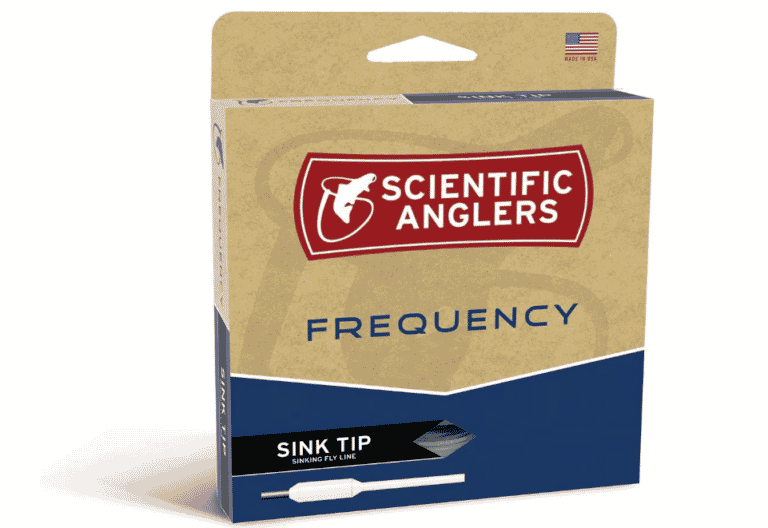
This is the perfect fly fishing line for streamers, dry flies, and wet flies. It is also perfect for trout, steelhead, salmon, and smaller bass in fast-moving water. The mid-length head enhances the control of the cast, and allows you to have a better fishing experience.
This is a sinking line that allows the line to sink at a rate of 2.5 to 4.0 inches per second.
This is a relatively more complex line for people to use. The line is green and yellow, making it easier to see.
Highlights:
- A sinking line with a good rate to reach the bottom.
- A high visibility line allows you to see the line better.
- A high-quality line that offers better quality.
- Perfect for several larger fish.
FAQs
There are several FAQs that you might have in regards to the fly fishing lines and the size. Here are those questions and the answers that go with them.
What color is the best for a fly fishing line?
The color for a fly fishing line isn’t so important when it comes to fly fishing within the day. There is no way to hide the line and the fish will be scared of the line you need to be patient to attract them with the fly that you add. The most important element is to choose a line color in the day that you can see. However, at night, you can use a dark shade line. This will hide the line from fish and provide you with a better chance of catching your game fish.
What is the taper on a fly fishing line?
Different designs are incorporated into a fly fishing line. These different designs offer different benefits such as more control, sinking towards the lure and more. Some of the best taper designs include the weight-forward type, which most of the above fly fishing lines.
Do all fly fishing lines sink?
No, not all fly fishing lines sink. There are three types of lines. Those that sink are present. But some partially sink and stay floating. It depends on your preference as to which one you would like to use when you’re fly fishing.
Can you use fly fishing lines in saltwater?
Fly fishing can be used in any environment, including within saltwater or at sea. However, there are a few precautions that you should take. Saltwater can damage equipment and you should wash the line and all equipment with fresh water as soon as you can and also ensure that the equipment is dry before you put it away. This will prevent any of your equipment from being damaged.
Can I use a larger-sized line for catching smaller fish?
When fishing, it is best to match your fly fishing line to the fish you’re trying to catch. Don’t use a larger line to catch smaller fish. This can be more damaging.
Can I use a smaller line to catch bigger fish?
If you’re trying to catch larger game fish with a smaller line, then you risk damaging your line or even breaking it. Therefore, be sure that you’re using the right line. If your line breaks, you will have to end your fishing trip, which will be upsetting.
Final Word
Fly fishing is a popular sport and a great pastime. However, it is also a confusing sport when you are first introduced. One of the things that you have to get used to is the different sizes that are available for fly lines. However, you need to know which line you need to catch the fish that you’re trying to catch. Above there is a quick guide on what size is needed for what fish. In addition, there is a list of the best lines for each size between 1 and 8. There are other sizes, up to 14, but very few people need these sizes as they are for only the largest game fish.
Stay tuned to our next guide when we cover fly rods and how to choose the best fly rod for your needs.



